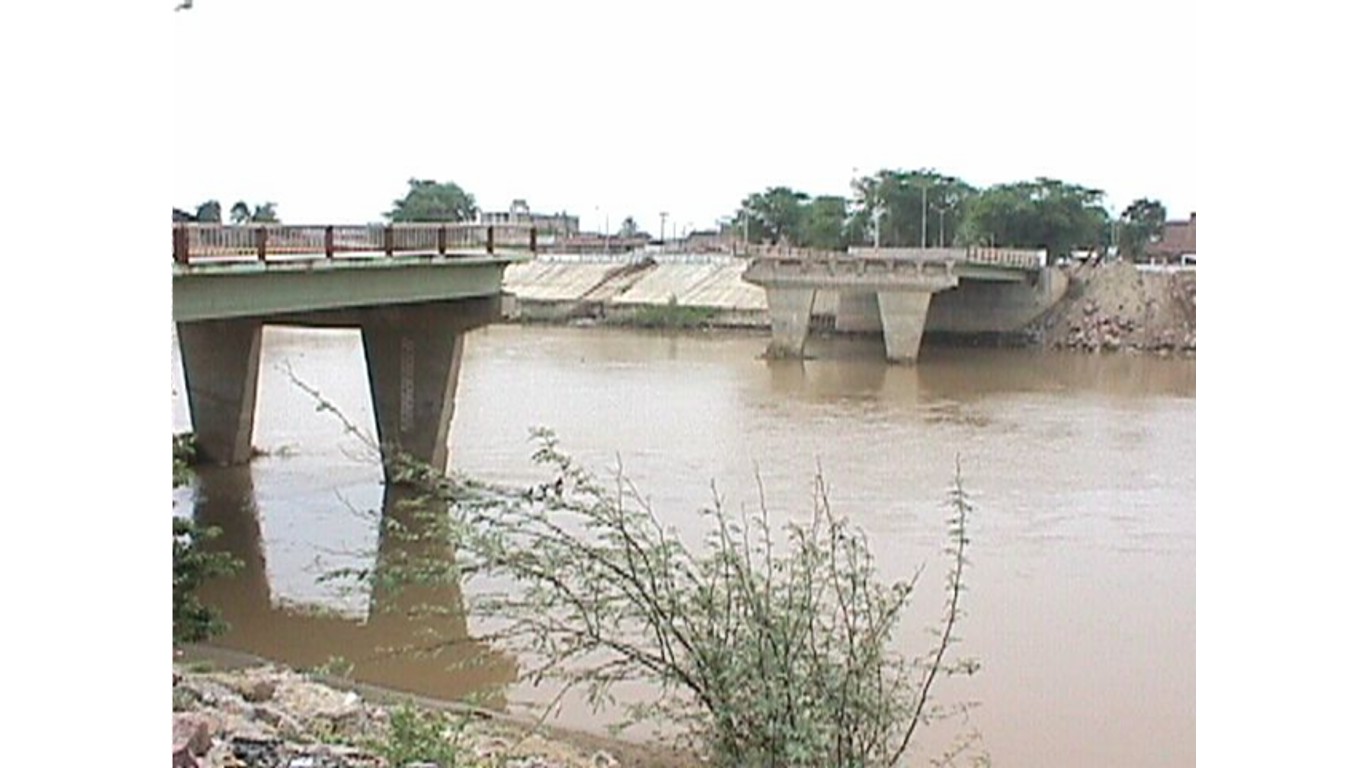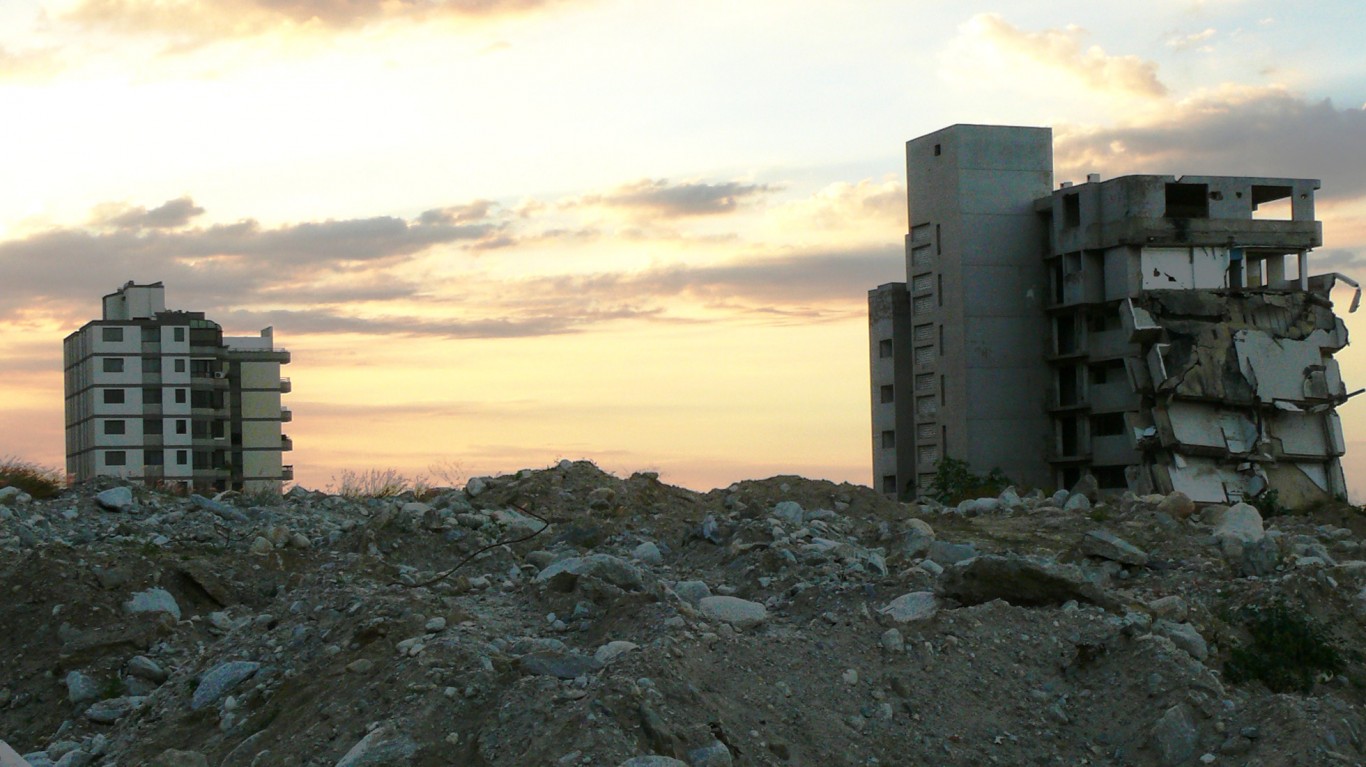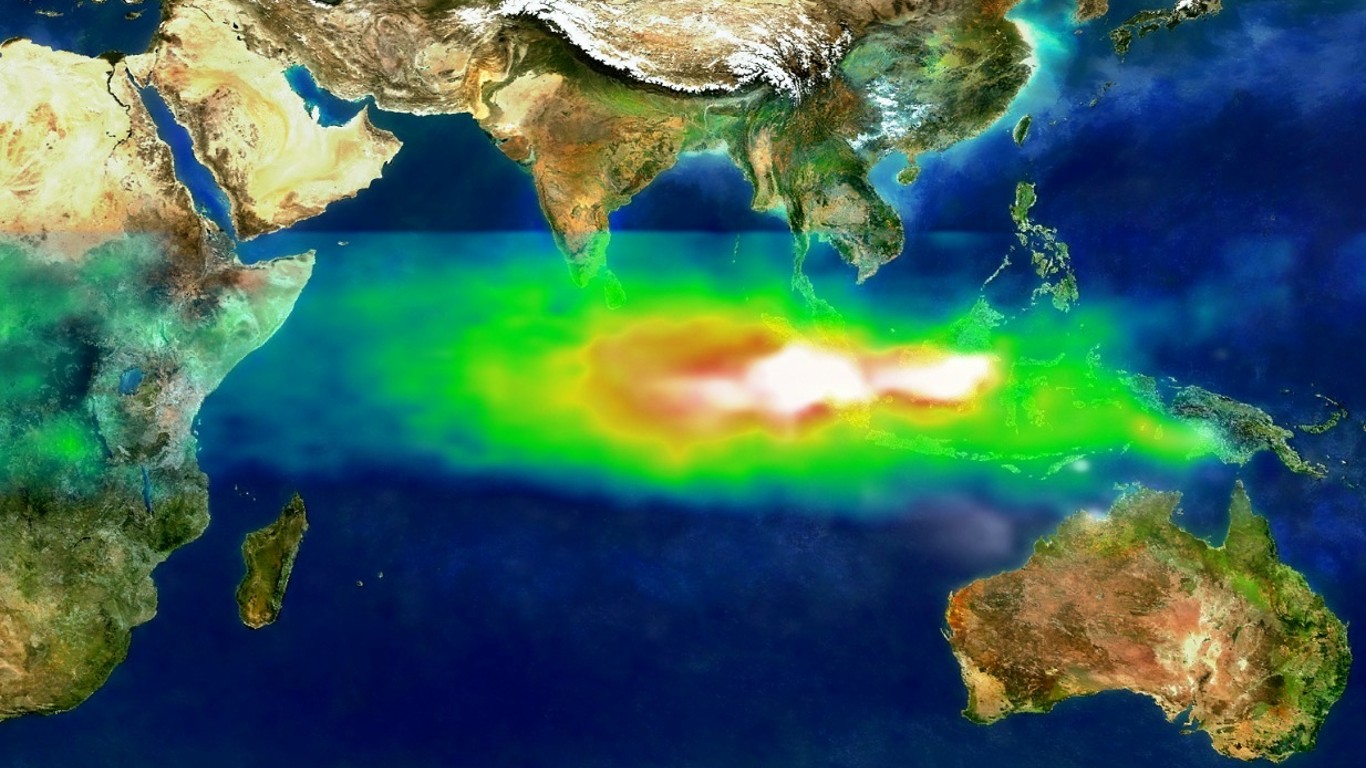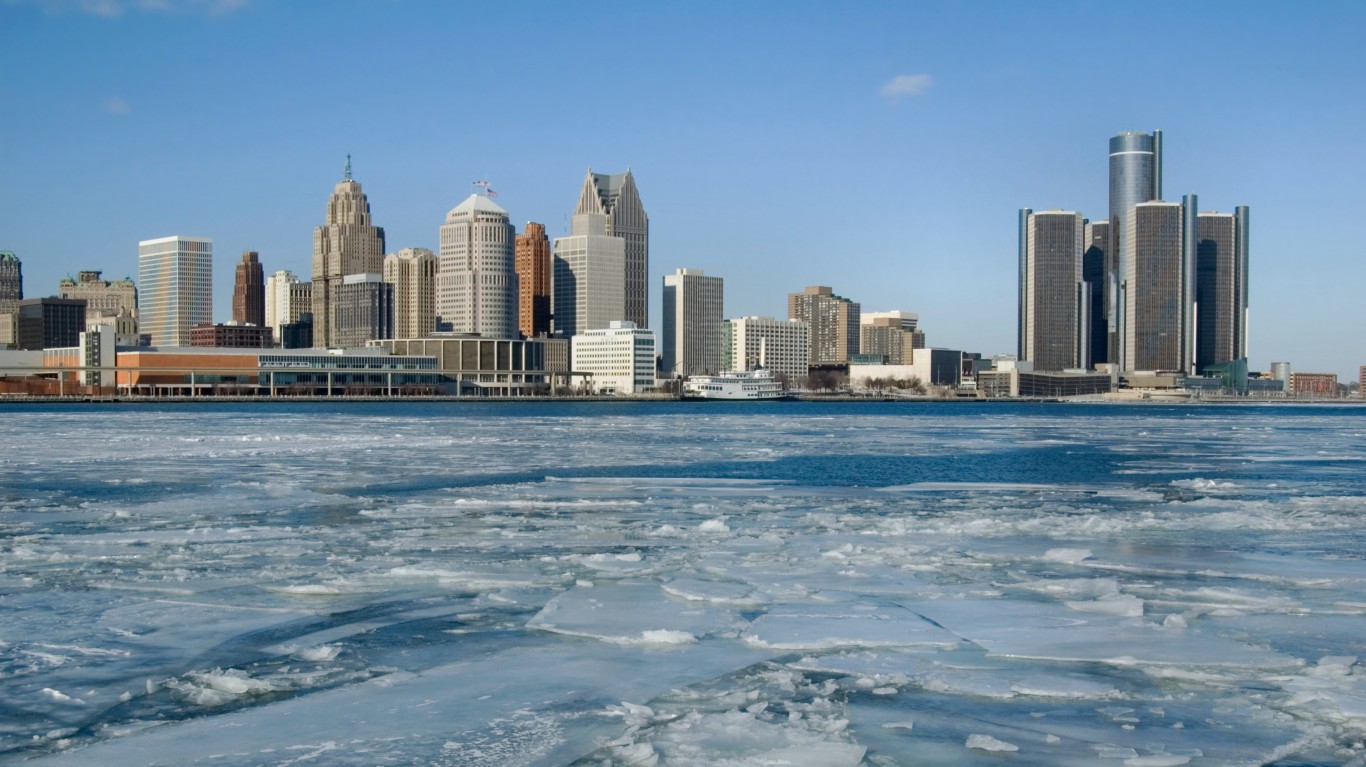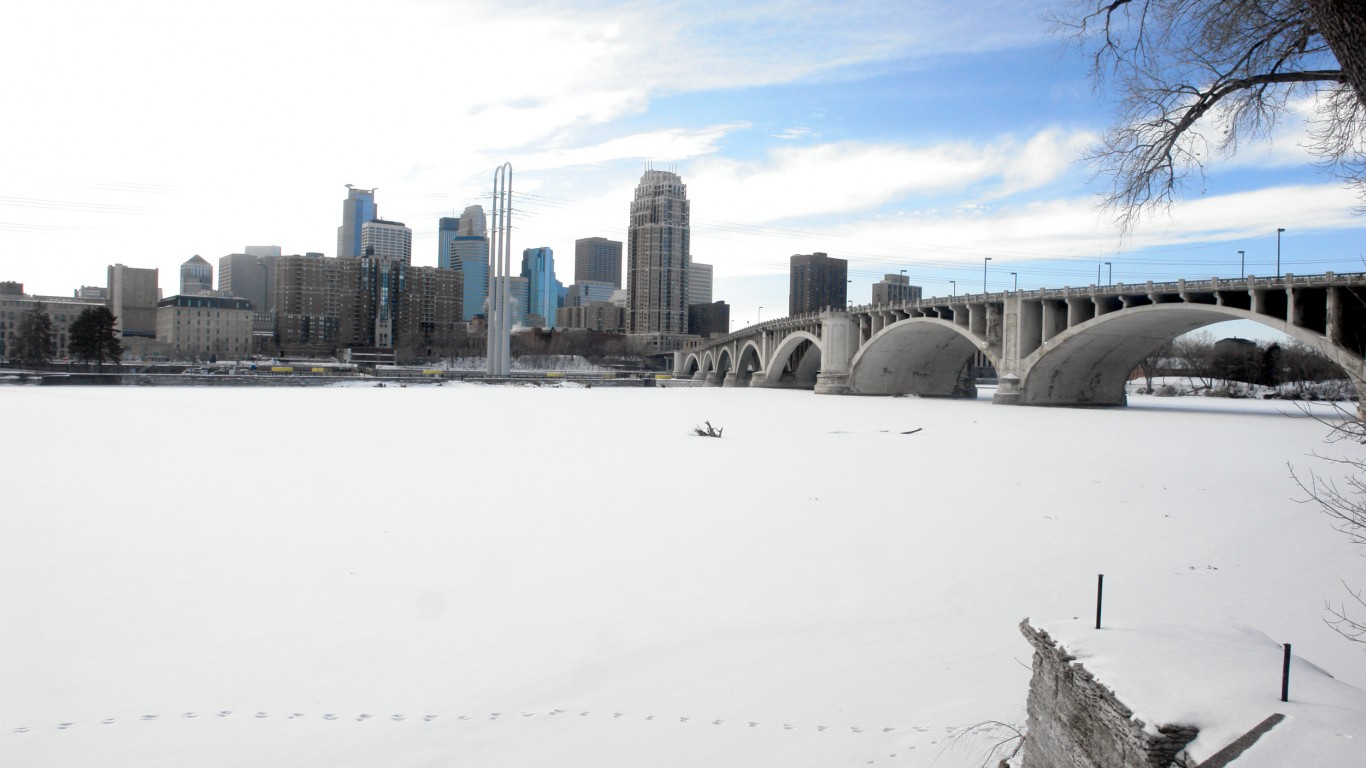
Natural disasters spare no country. Whether it’s flooding due to torrential downpours from a hurricane or cyclone or a lack of rain that parches the earth, every continent endures a weather-related catastrophe, leaving behind a wake of death and destruction. A humanitarian crisis inevitably follows these disasters, with countries taking months and years to recover.
Each region often suffers the same type of natural disaster. Hurricanes have pounded the Gulf States of the U.S. for centuries, just as cyclones have struck South Pacific islands like the Philippines. (Here are the states with the most tornadoes.)
To identify the five most costly natural disasters in each of the world’s six regions since 1970, 24/7 Wall St. reviewed the economic losses associated with weather disasters from the World Meteorological Organization report, “WMO Atlas of Mortality and Economic Losses from Weather, Climate and Water Extremes (1970–2019).” The six regions are: Africa, Asia, Europe, North America, Central America and the Caribbean, South America, and the South-West Pacific.
Notable from the list is the immense price countries pay in terms of lives lost and economic harm. Even more striking is how the socioeconomic status of the country or region shapes the ultimate fallout from the disaster. Poorer, still developing regions tend to suffer more deaths but lower economic losses, while richer, more developed countries weather a significant economic hit.
According to the United Nations country classification, 91% of all deaths from weather, climate and water hazards occurred in developing countries. Meanwhile, 59% of economic losses registered in developed economies.
The World Bank country classifications highlighted similar trends. More than 80% of deaths centered in low- and lower-middle-income countries. Conversely, nearly 90% of the economic losses came in upper-middle- and high-income economies.
Besides the human and fiscal carnage, disasters often have political repercussions. How well and swiftly leaders respond to a catastrophe leaves a lingering impression on the minds of the public — for good or bad. Hurricane Katrina is remembered as much for its destruction as for then-President George W. Bush’s tepid response that tainted his presidency. (See U.S. cities where hurricanes would cause the most damage.)
Click here to see the most costly natural disasters of all time
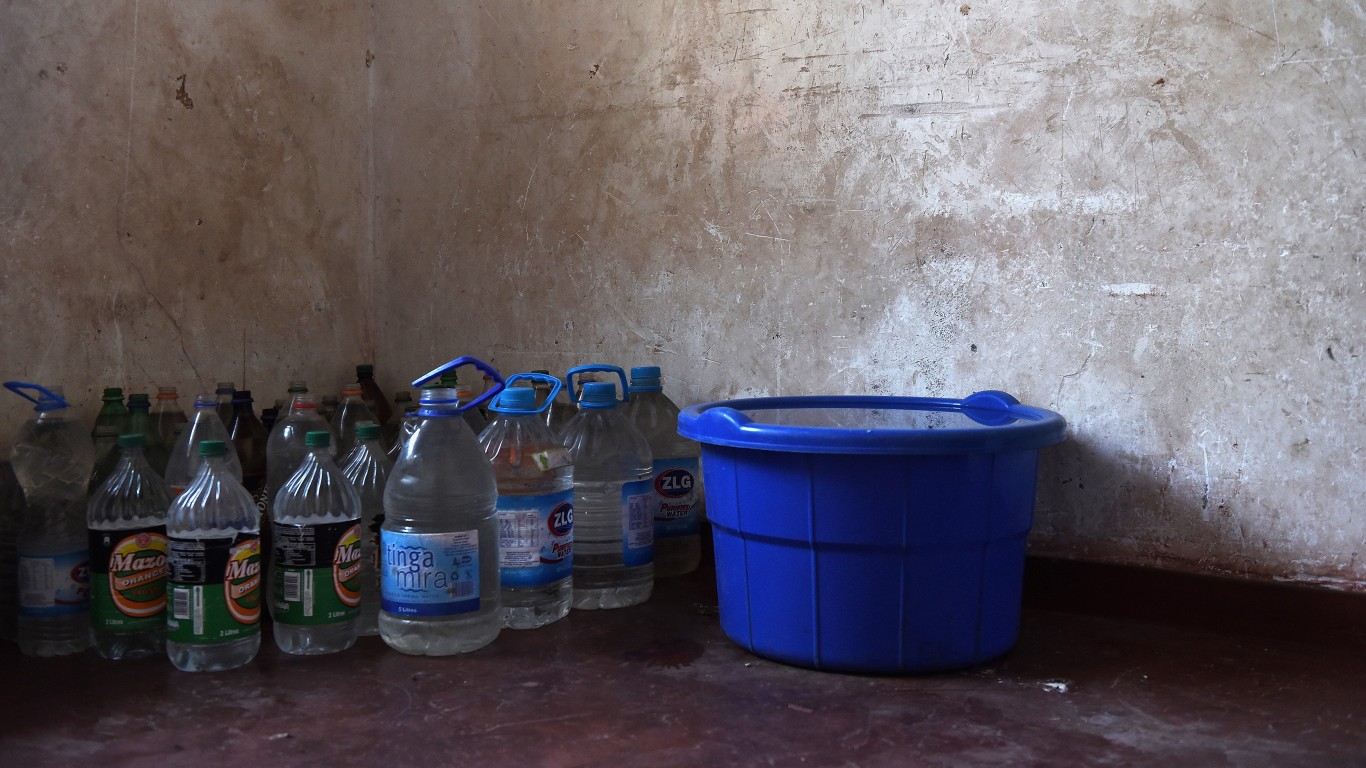
5. Drought
> Region: Africa
> Economic losses: $1.5 billion
> Year: 2015
> Country: Ethiopia
Each year, Ethiopian farmers depend on the rain to fertilize their pastures in the fertile central and eastern parts of the country. In 2015, however, the rains never came during the usual rainy season of February to May. The parched land failed to produce crops, leaving some 10 million needing emergency food assistance.
[in-text-ad]

4. Storm (Emilie)
> Region: Africa
> Economic losses: $1.5 billion
> Year: 1977
> Country: Madagascar
Although the 1976-77 South-West Indian Ocean cyclone season was below average, Tropical Storm Emilie hit the east coast of Mozambique and northeastern South Africa in February 1977. Heavy flooding killed 300 people. Madagascar is an island off the coast of Mozambique.

3. Flood
> Region: Africa
> Economic losses: $1.7 billion
> Year: 1987
> Country: South Africa
Heavier than usual rainfalls in the Natal and Greater Durban region of South Africa produced mudslides and severe flooding that took the lives of 380 people and caused significant property damage in Durban. The rain occurred over four days in September 1987.
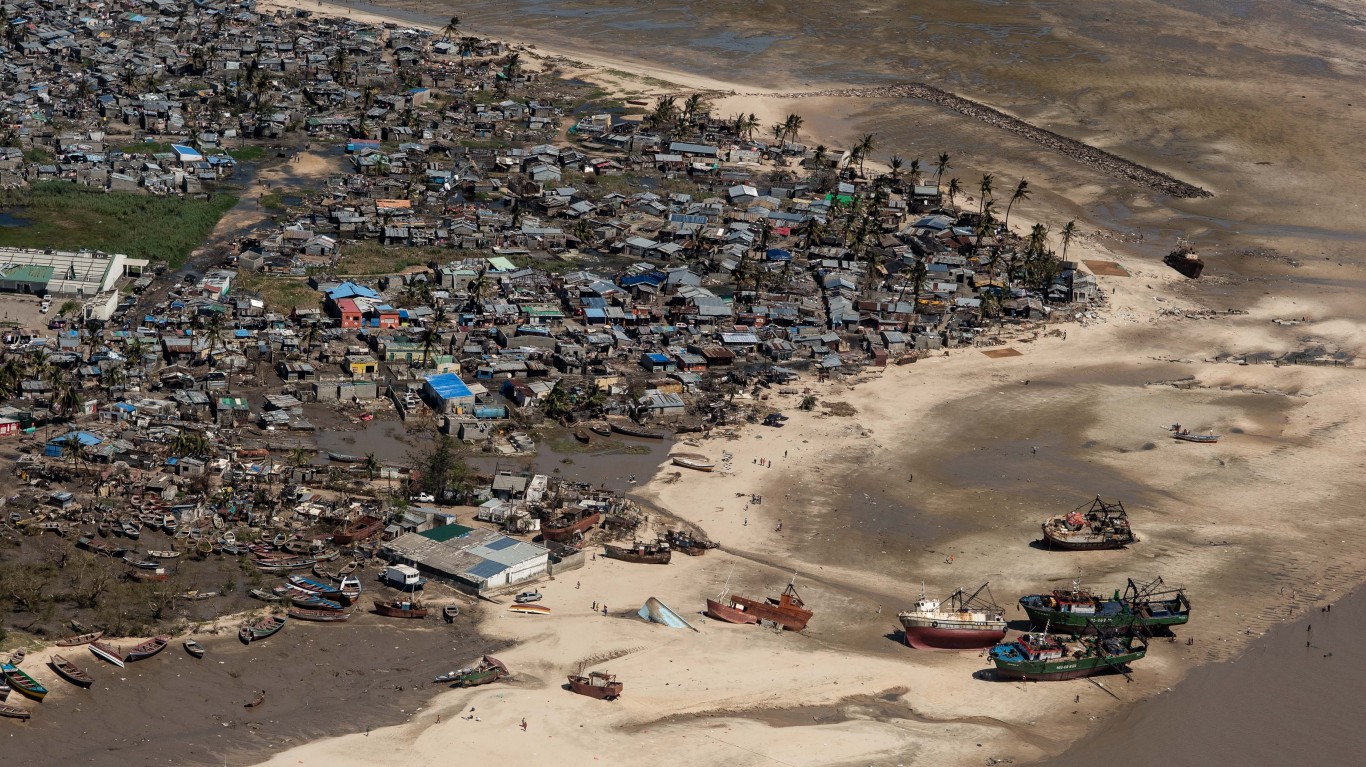
2. Storm (Idai)
> Region: Africa
> Economic losses: $2.0 billion
> Year: 2019
> Country: Mozambique
One of the worst tropical storms to emerge in the South-West Indian Ocean, Cyclone Idai left more than 1,300 people dead in Mozambique, Zimbabwe, and Malawi. The March 2019 storm also led to a humanitarian crisis in the region, with hundreds of thousands in need of assistance.
[in-text-ad-2]
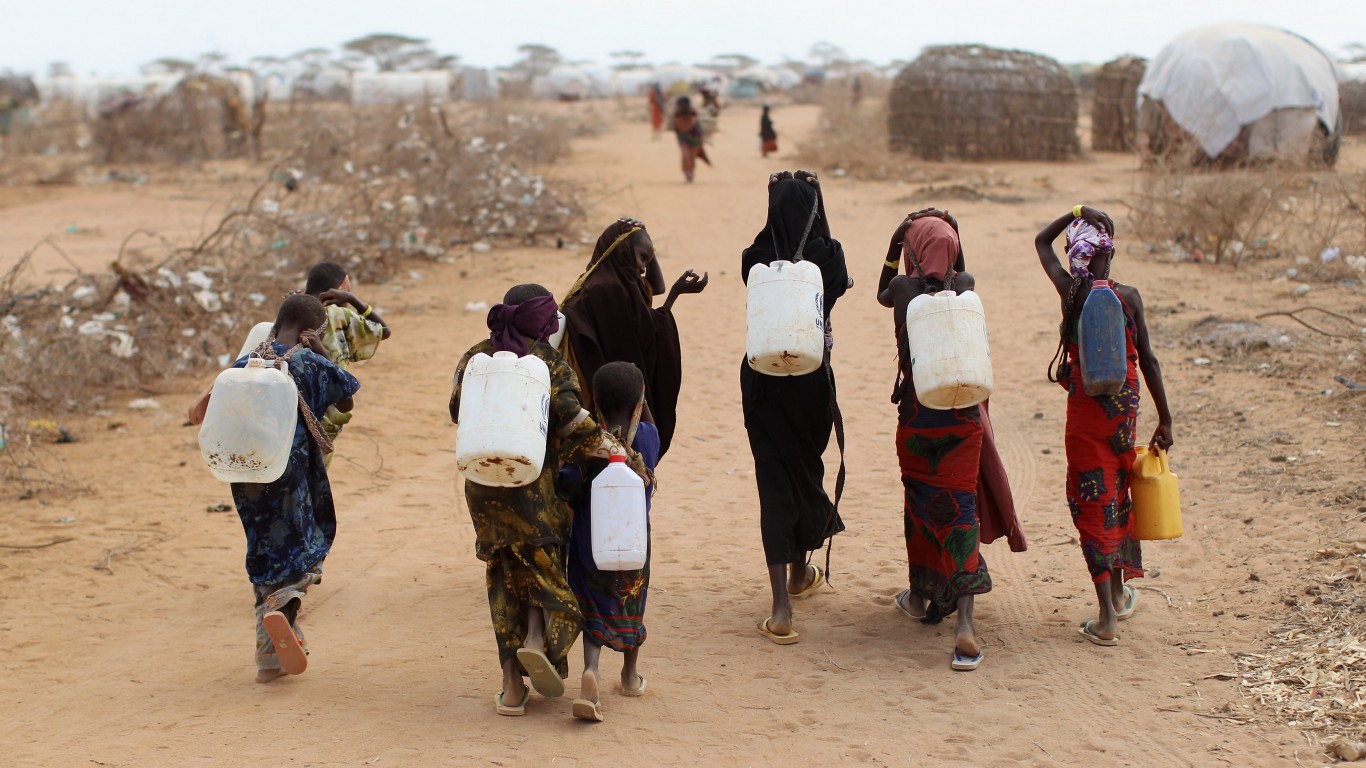
1. Drought
> Region: Africa
> Economic losses: $2.0 billion
> Year: 1990
> Country: South Africa
South Africa has a history of droughts that affect crop production and lead to food scarcity.
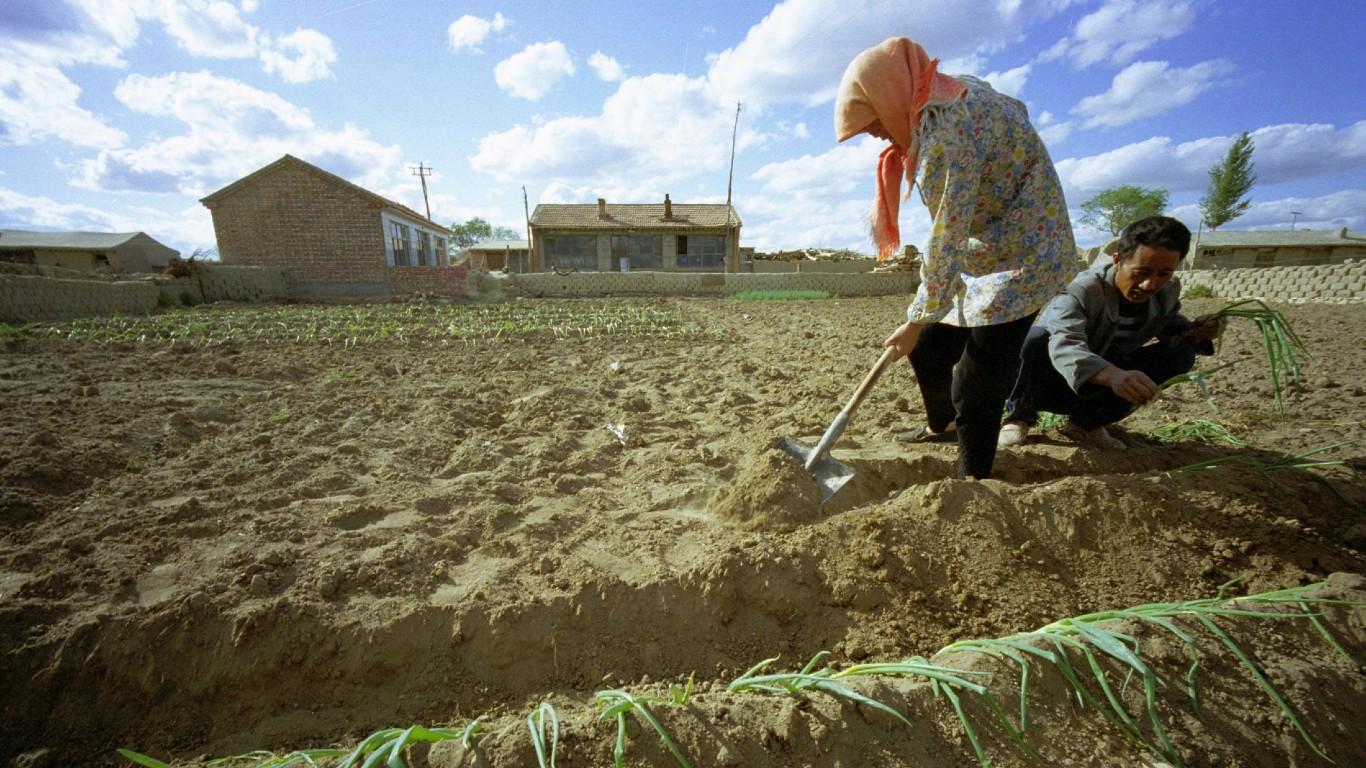
5. Drought
> Region: Asia
> Economic losses: $23.7 billion
> Year: 1994
> Country: China
The rainy season in China typically produces 24 inches of rain. But in 1994, the rainfall dropped by 60% to 90%, leading to water shortages in the cities of Beijing and Tianjin. Nearly 80 million farmers struggled to find water for their families, crops, and livestock.
[in-text-ad]
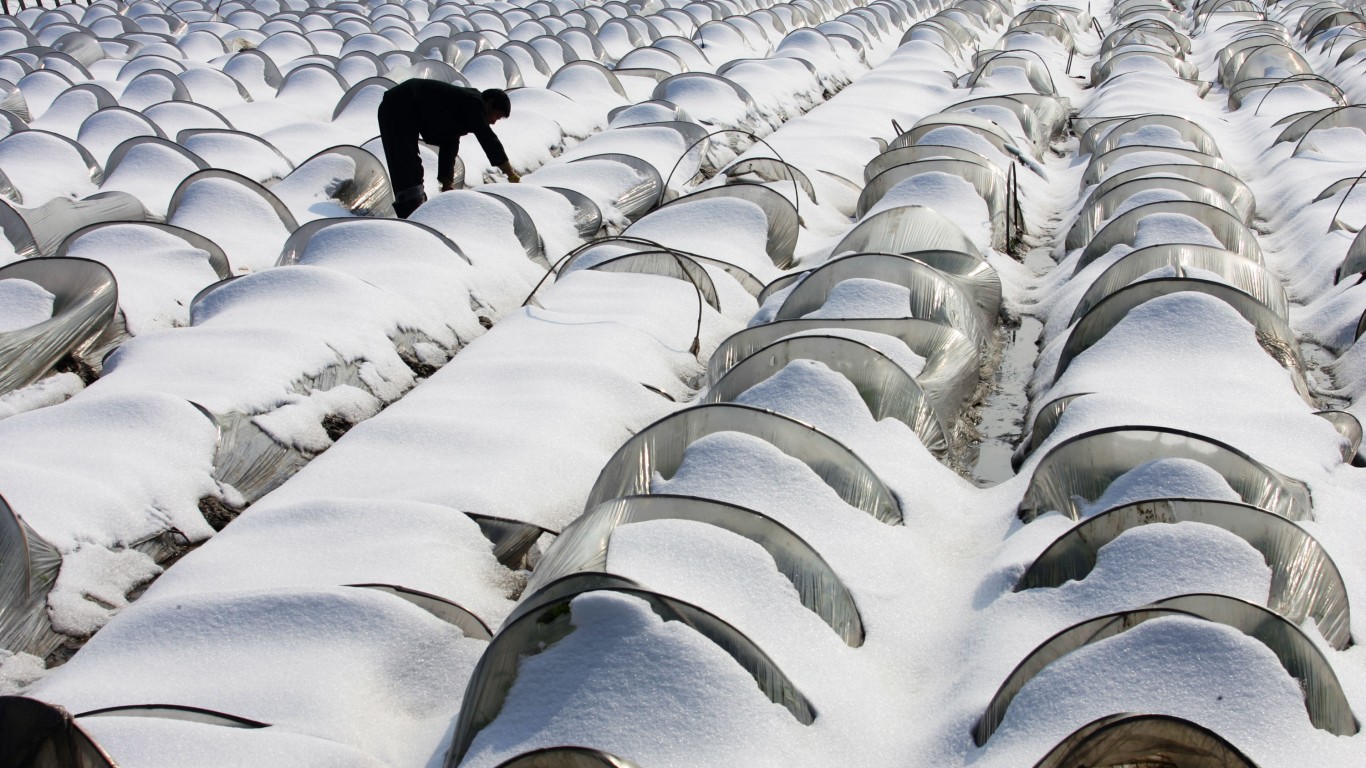
4. Extreme temperature
> Region: Asia
> Economic losses: $25.1 billion
> Year: 2008
> Country: China
Southern and central China isn’t prone to heavy snowfalls. But between January and February 2008, winter storms hit the region, bringing ice, snow, and extremely cold temperatures. Property damage and travel disruptions ensued, and according to reports, the storms led to the deaths of 129 people.
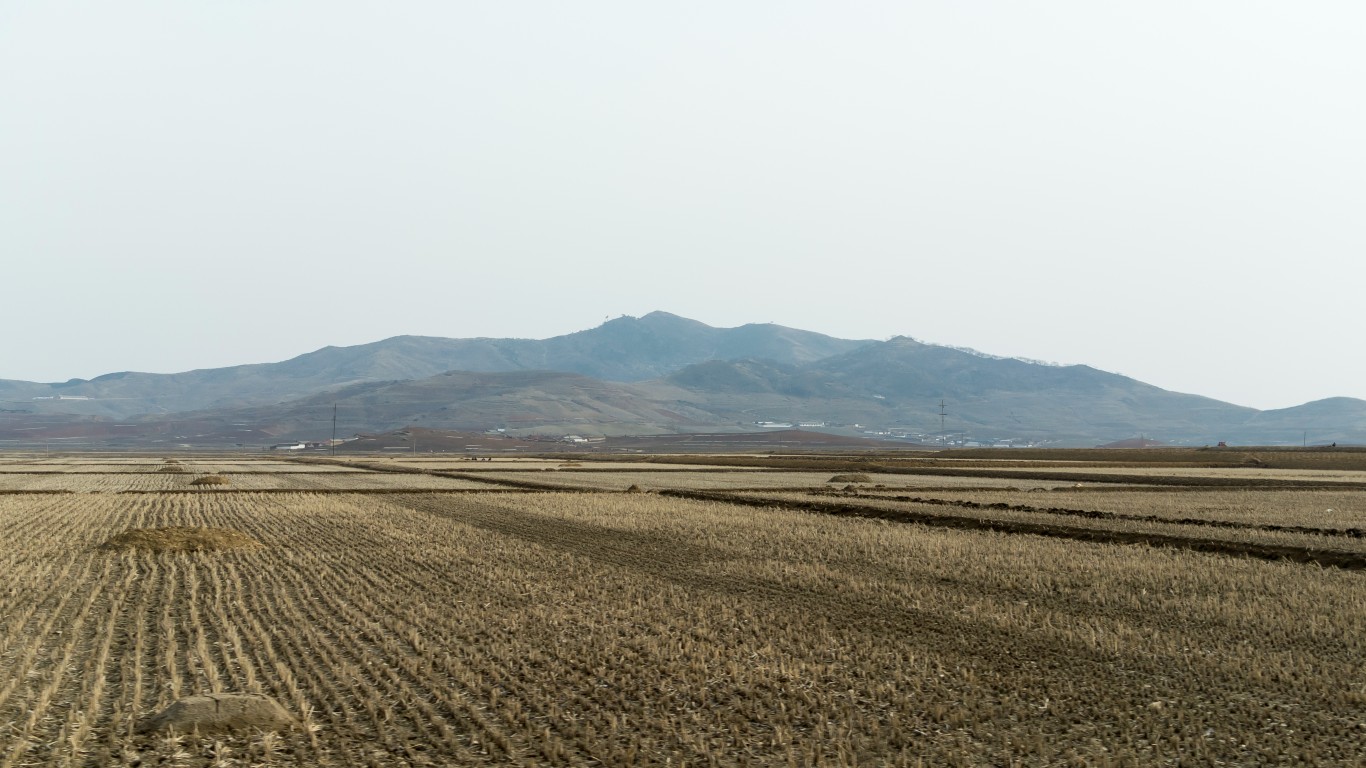
3. Flood
> Region: Asia
> Economic losses: $25.2 billion
> Year: 1995
> Country: Democratic People’s Republic of Korea
Heavy flooding in the Democratic People’s Republic of Korea (North Korea) in 1994 destroyed much of the country’s harvest. The situation became so dire that the normally isolationist country appealed for international aid.
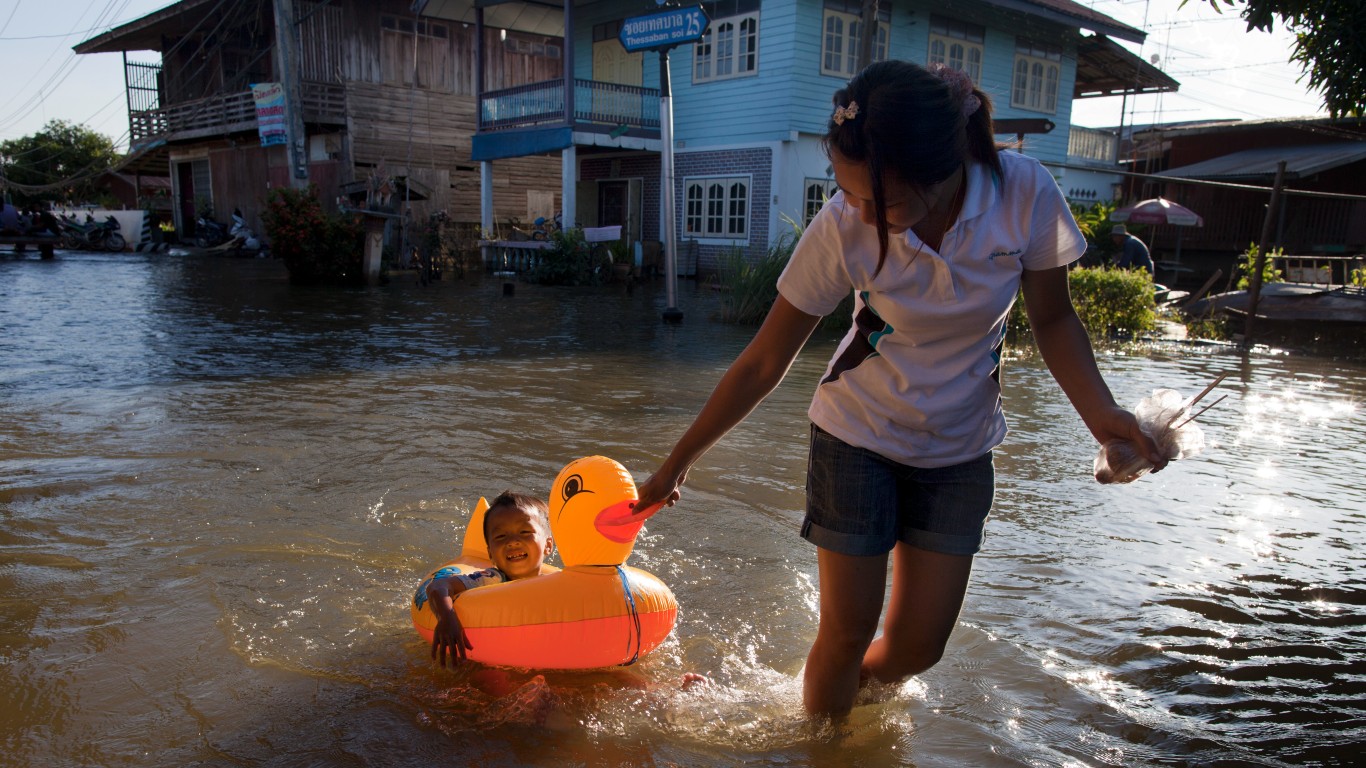
2. Flood
> Region: Asia
> Economic losses: $44.5 billion
> Year: 2011
> Country: Thailand
When Tropical Storm Nock-ten made landfall in Thailand in 2011. It came during the monsoon season, triggering severe flooding in 65 of the country’s 76 provinces. The floods affected 13.6 million people and led to the deaths of 815.
[in-text-ad-2]
1. Flood
> Region: Asia
> Economic losses: $47.0 billion
> Year: 1998
> Country: China
More than 60 days of heavy flooding along the banks of the Yangtze River in July-August 1998 affected 223 million people — one-fifth of China’s population. More than 3,000 died, 15 million were left homeless, and 15 million farmers saw their crops destroyed.
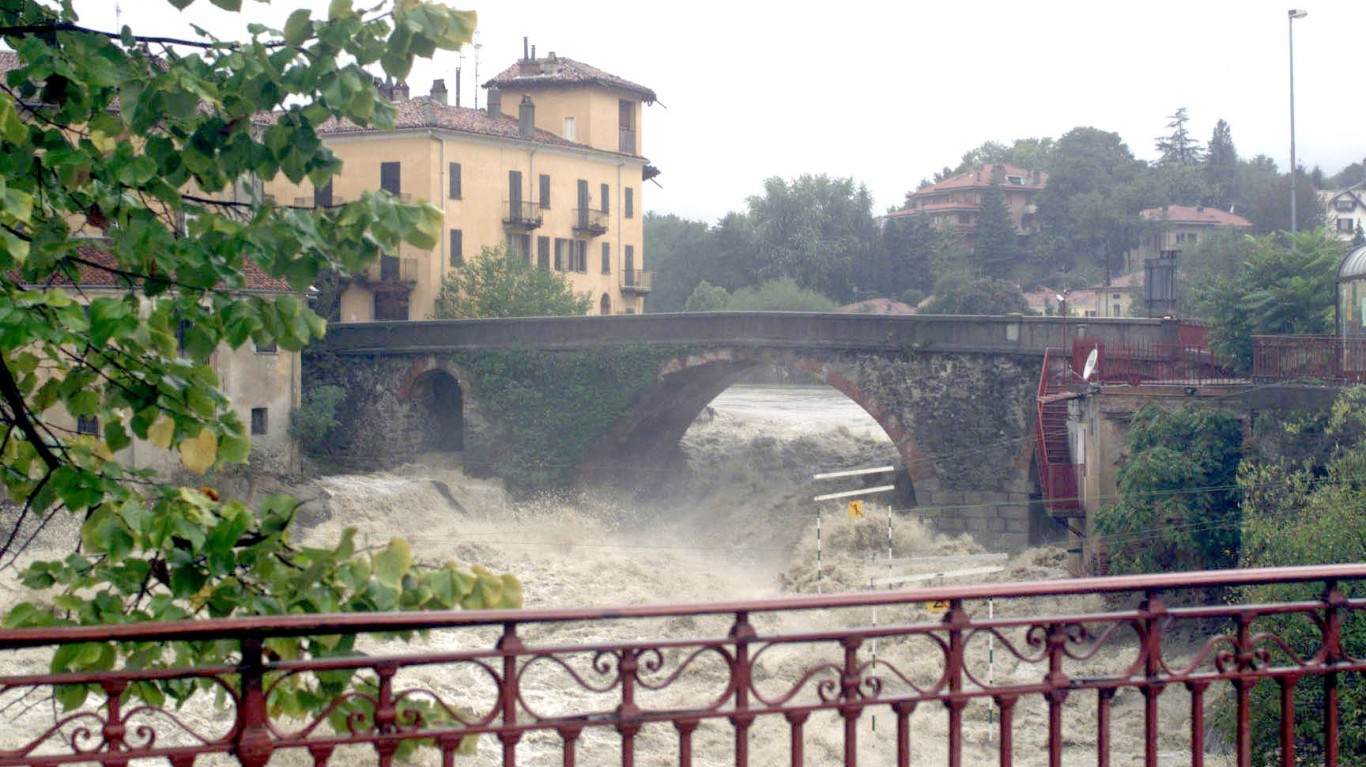
5. Flood
> Region: Europe
> Economic losses: $11.9 billion
> Year: 2000
> Country: Italy
Italy’s industrial center in the north was struck by torrential rains in 2000, killing 15 people and displacing 12,000 in towns along the Po River. The flooding was so severe that Fiat’s production facility in Turin was closed down.
[in-text-ad]
4. Storm
> Region: Europe
> Economic losses: $12.3 billion
> Year: 1999
> Country: France
A violent windstorm, Cyclone Martin caused extensive infrastructure and power systems damage in France as well as Spain, Switzerland, and Italy with winds reaching 120 miles per hour. Cyclone Martin hit one day after Cyclone Lothar hit the same countries. Together, the storms were dubbed the “Storm of the Century” in Western and Central Europe.
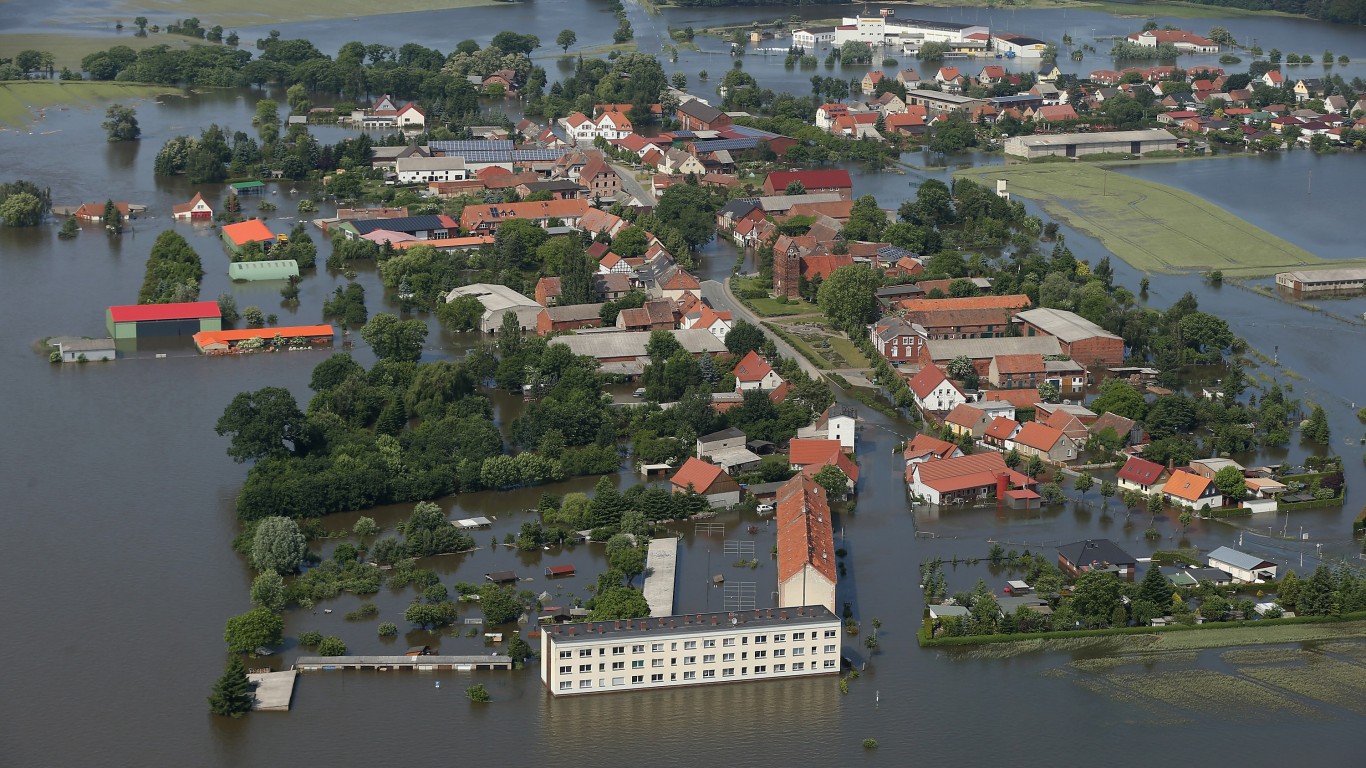
3. Flood
> Region: Europe
> Economic losses: $13.9 billion
> Year: 2013
> Country: Germany
Central and southern Germany are prone to frequent floods due to heavy precipitation in populated areas along river valleys. But between May and June 2013, rain pounded the upstream areas of the Danube and Elbe rivers, with the Elbe river cresting more than 16 feet above normal.

2. Flood
> Region: Europe
> Economic losses: $16.0 billion
> Year: 1994
> Country: Italy
In November 1994, a catastrophic storm brought heavy rains to northern Italy, flooding 450,000 hectares and killing 70 people. The storm was the worst in the region’s history since 1913, shutting down highways, railways, and roads for days.
[in-text-ad-2]
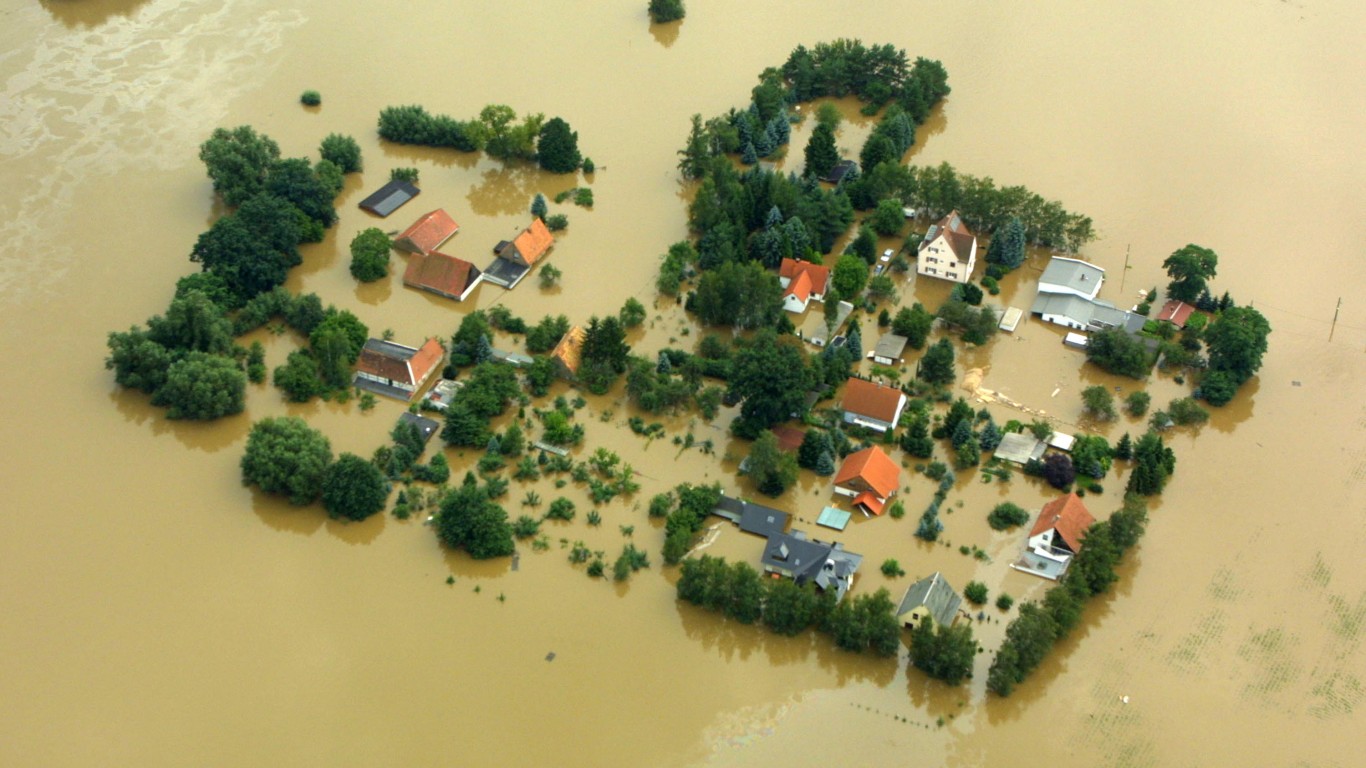
1. Flood
> Region: Europe
> Economic losses: $16.5 billion
> Year: 2002
> Country: Germany
In August 2002, more than a week of heavy rains poured over Germany, Czech Republic, Italy, Spain, Austria, Slovakia, Hungary, Romania, Bulgaria, Croatia, Ukraine, and Russia. The resulting flooding killed 110 people.

5. Storm (Sandy)
> Region: North America, Central America, and the Caribbean
> Economic losses: $54.5 billion
> Year: 2012
> Country: United States
“Superstorm Sandy” swept through North America, Central America, and the Caribbean in 2012, leaving behind a path of destruction that killed 147 people and caused massive property damage due to wind and flooding. The October storm had a diameter of more than 900 miles and was particularly destructive to states along the Eastern Seaboard in the U.S.
[in-text-ad]

4. Storm (Irma)
> Region: North America, Central America, and the Caribbean
> Economic losses: $58.2 billion
> Year: 2017
> Country: United States
On Sept. 10, 2017, Hurricane Irma made landfall in Florida as a Category 4 storm, then strengthened to Category 5 with winds of 177 miles per hour. The storm knocked out power for more than 6.8 million people, leaving 47 deaths directly attributed to high winds, heavy rains, and rising surf in the Caribbean Islands.
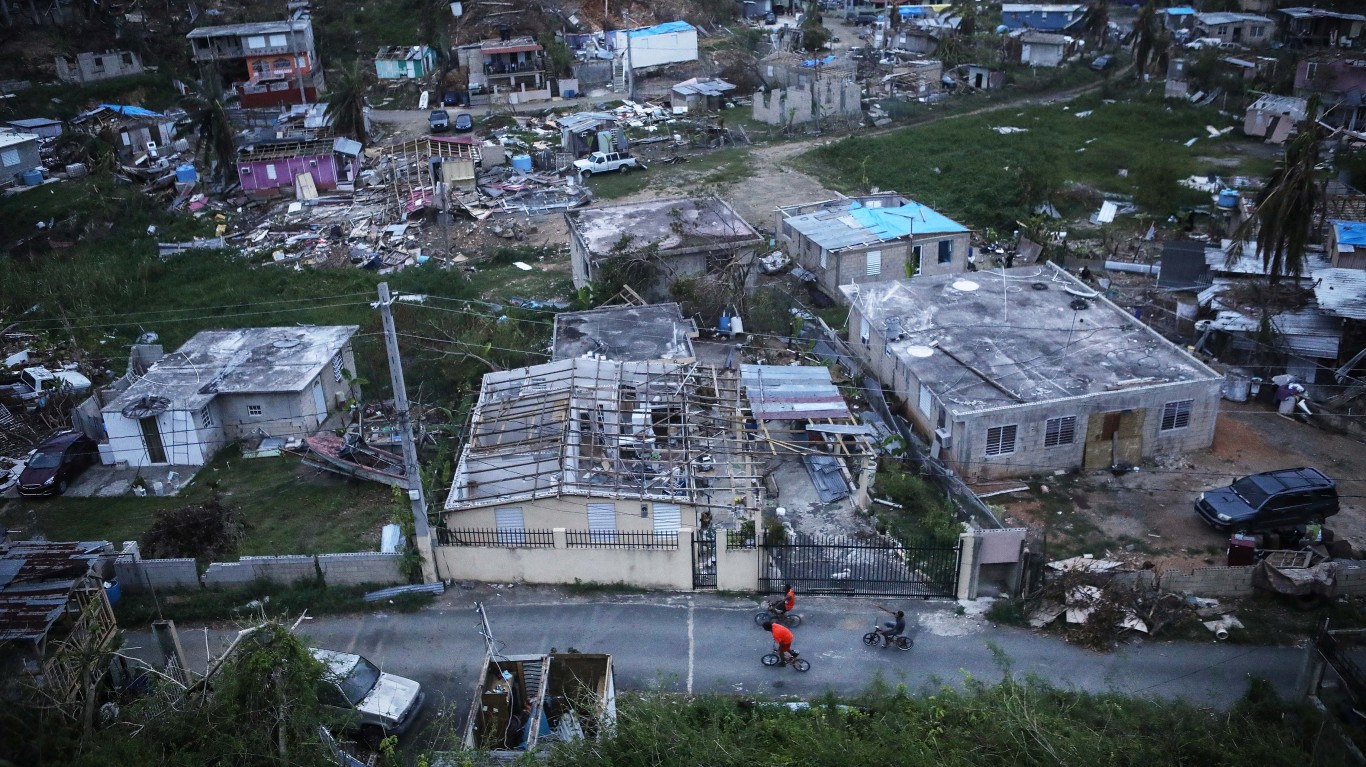
3. Storm (Maria)
> Region: North America, Central America, and the Caribbean
> Economic losses: $69.4 billion
> Year: 2017
> Country: Puerto Rico
In September 2017, Hurricane Maria barreled into the island of Puerto Rico with winds of 155 miles per hour. The entire island lost electricity, and the island’s 3.4 million residents were without food or water. Nearly 3,000 Puerto Ricans lost their lives in one of the worst storms of an active 2017 hurricane season.
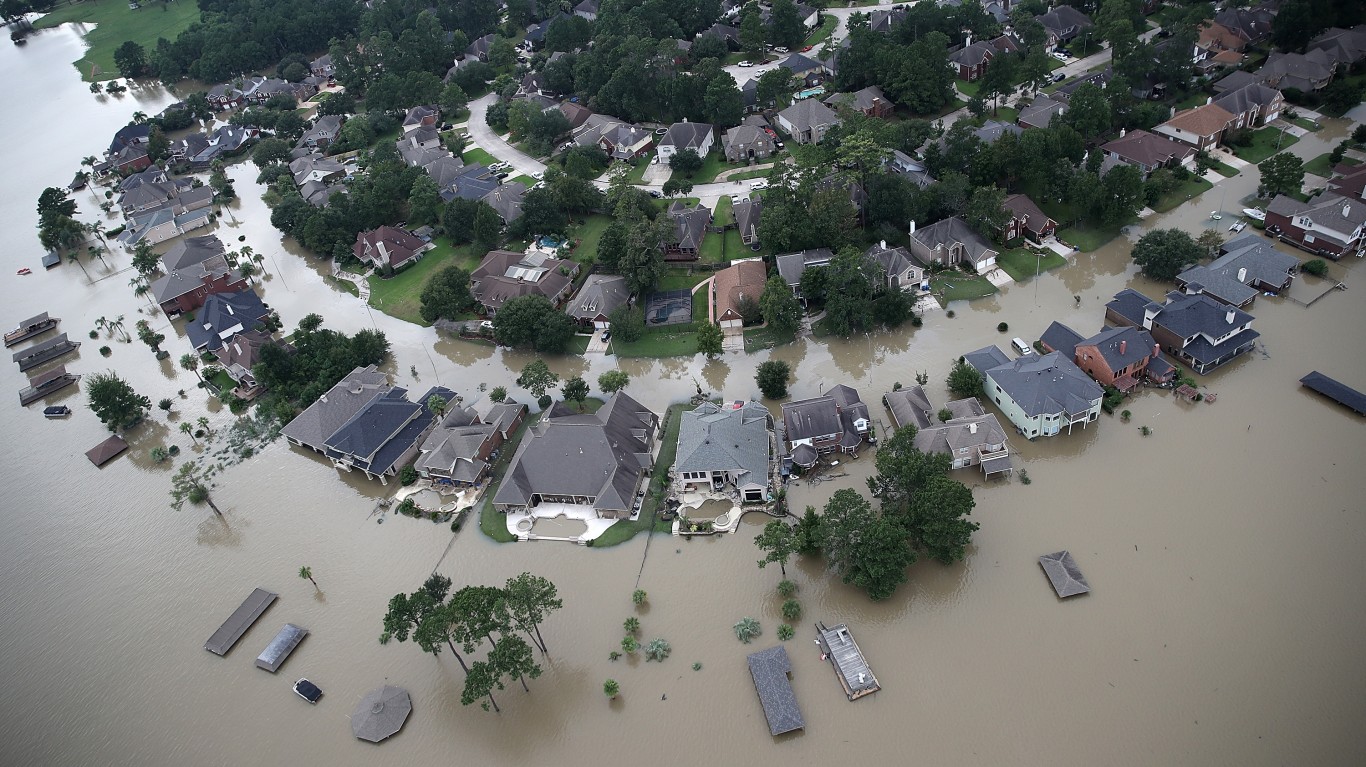
2. Storm (Harvey)
> Region: North America, Central America, and the Caribbean
> Economic losses: $96.9 billion
> Year: 2017
> Country: United States
Like Hurricane Maria, Hurricane Harvey struck during the active 2017 hurricane season. Making landfall as a Category 4 storm, Harvey centered mostly in Texas and Louisiana, with the Houston metropolitan area taking the brunt of the storm as the region was deluged by catastrophic rains and flooding. The storm killed more than 100 people.
[in-text-ad-2]

1. Storm (Katrina)
> Region: North America, Central America, and the Caribbean
> Economic losses: $163.6 billion
> Year: 2005
> Country: United States
Considered one of the most destructive natural disasters in U.S. history, Hurricane Katrina made landfall about 45 miles from New Orleans in late August 2005. Even though it escaped a direct hit, the city’s levee system was overrun by flood waters. As a result, 20% of New Orleans ended under water. The storm claimed 1,200 lives.
5. Flood
> Region: South America
> Economic losses: $3.2 billion
> Year: 2017
> Country: Peru
Battered by El Niño conditions, a pattern of unusual warming of the surface waters of the eastern Pacific Ocean, Peru withstood 10 times more rainfall than normal, causing overflowing rivers and mudslides. The storm destroyed roads and farms and took the lives of more than 70 people.
[in-text-ad]
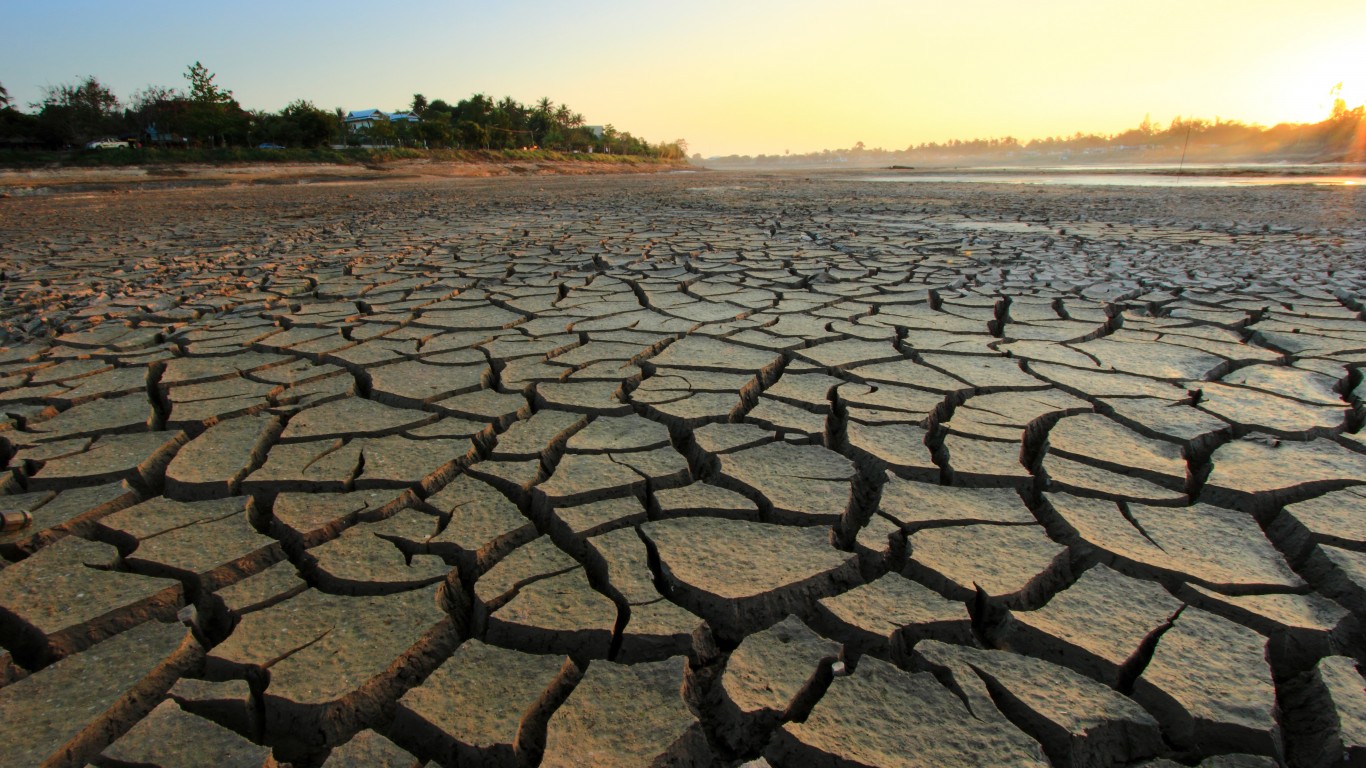
4. Drought
> Region: South America
> Economic losses: $3.4 billion
> Year: 2018
> Country: Argentina
Below average rainfall in southern South America caused a severe drought in parts of Argentina and Uruguay. The drought hit the Pampas region of Argentina particularly hard, with the country’s corn and soybean harvests impacted the most. The lack of rain was compounded by searing heat. Argentina’s GNP decreased roughly 0.8% due to the drought.
3. Flood
> Region: South America
> Economic losses: $4.9 billion
> Year: 1999
> Country: Bolivarian Republic of Venezuela
In December 1999, torrential rains in the mountainous regions of Venezuela triggered devastating mudslides. Estimates put the death toll at between 10,000 and 30,000, with some 190,000 torn from their homes.

2. Drought
> Region: South America
> Economic losses: $5.3 billion
> Year: 2014
> Country: Brazil
Southeast Brazil, including the cities of São Paulo and Rio de Janeiro were parched by the worst drought in 100 years. Residents suffered occasional water shutoffs. Fortunately, heavy rains in late 2015 and early 2016 brought a measure of relief.
[in-text-ad-2]

1. Drought
> Region: South America
> Economic losses: $9.0 billion
> Year: 1978
> Country: Brazil
In 1978, Brazil experienced another damaging drought. What made it more devastating is that the drought hit the country’s fertile region, with farmers suffering crop losses, especially for Brazil’s main exports — coffee and soybeans.
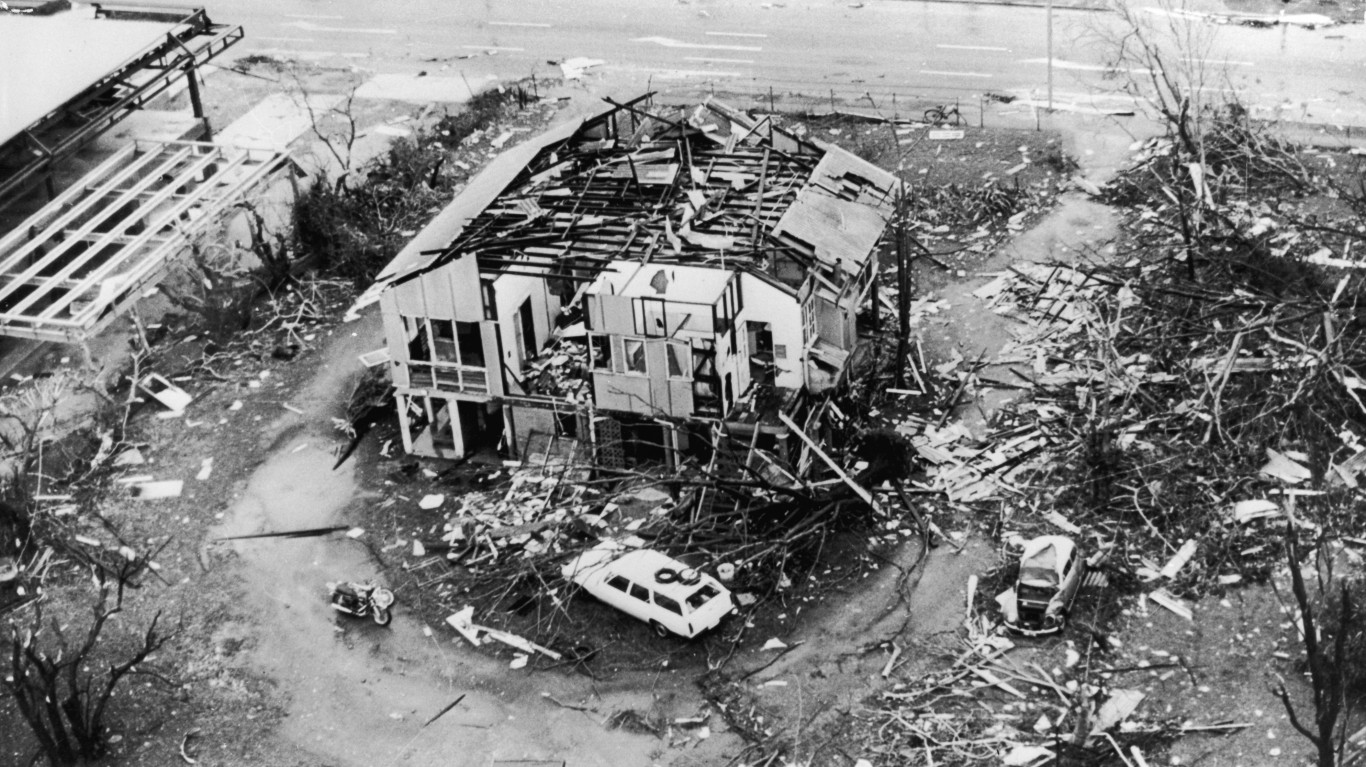
5. Storm (Tracy)
> Region: South-West Pacific
> Economic losses: $4.2 billion
> Year: 1974
> Country: Australia
Cyclone Tracy bashed into the city of Darwin in the Northern Territory of Australia during Christmas week in 1974. In its wake, 71 people died and 70% of Darwin’s buildings were destroyed, including 70% of homes.
[in-text-ad]
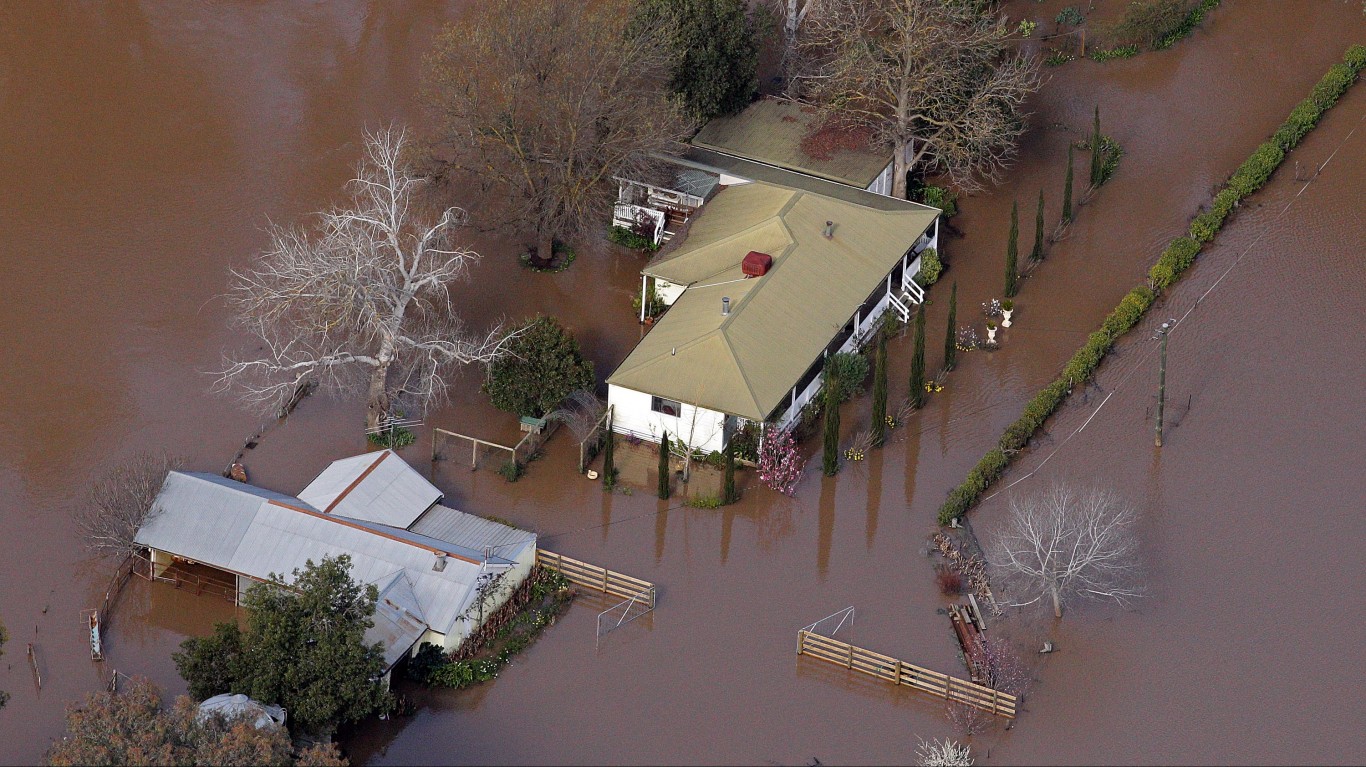
4. Flood
> Region: South-West Pacific
> Economic losses: $8.6 billion
> Year: 2010
> Country: Australia
Prompted by heavy rains, the flooding of 2010 and 2011 primarily centered in northern Australia, with the states of Queensland, New South Wales, and Victoria being hardest hit. Estimates put the death toll at 35.
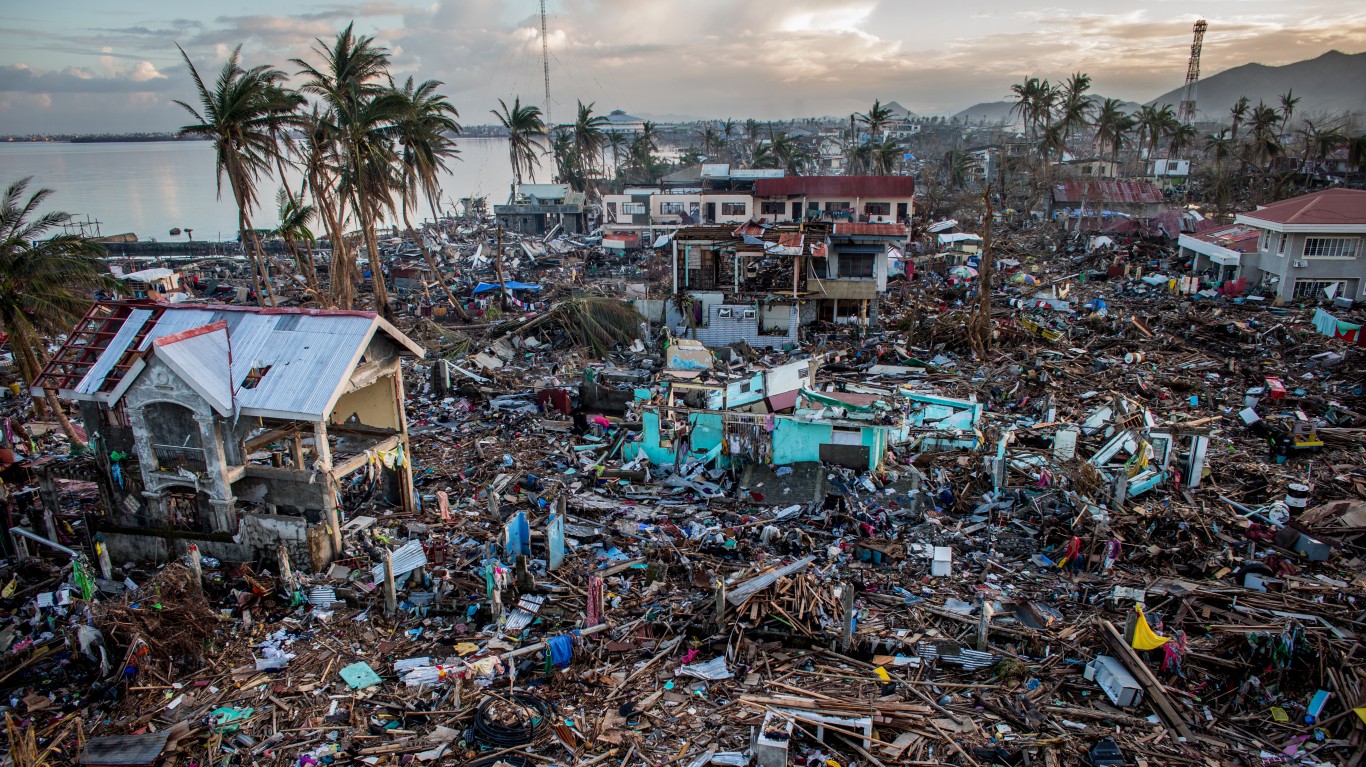
3. Storm
> Region: South-West Pacific
> Economic losses: $10.7 billion
> Year: 2013
> Country: Philippines
The 2013 Pacific typhoon season was one of the most active Pacific typhoon seasons and one of the deadliest.
2. Wildfire
> Region: South-West Pacific
> Economic losses: $12.7 billion
> Year: 1997
> Country: Indonesia
A series of forest fires in Indonesia in 1997 spread clouds of smoke across neighboring countries Malaysia and Singapore. When the fires were finally doused by seasonal rain in 1998, 8 million hectares were left parched and dry, and air pollution affected many nearby residents.
[in-text-ad-2]

1. Drought
> Region: South-West Pacific
> Economic losses: $16.9 billion
> Year: 1981
> Country: Australia
Australia experienced continuous droughts in the early 1980s. It began with a dry spring in 1981 and continued through 1982. Farmers were only able to harvest meager crops, but a wet March and April brought relief.
Travel Cards Are Getting Too Good To Ignore (sponsored)
Credit card companies are pulling out all the stops, with the issuers are offering insane travel rewards and perks.
We’re talking huge sign-up bonuses, points on every purchase, and benefits like lounge access, travel credits, and free hotel nights. For travelers, these rewards can add up to thousands of dollars in flights, upgrades, and luxury experiences every year.
It’s like getting paid to travel — and it’s available to qualified borrowers who know where to look.
We’ve rounded up some of the best travel credit cards on the market. Click here to see the list. Don’t miss these offers — they won’t be this good forever.
Thank you for reading! Have some feedback for us?
Contact the 24/7 Wall St. editorial team.
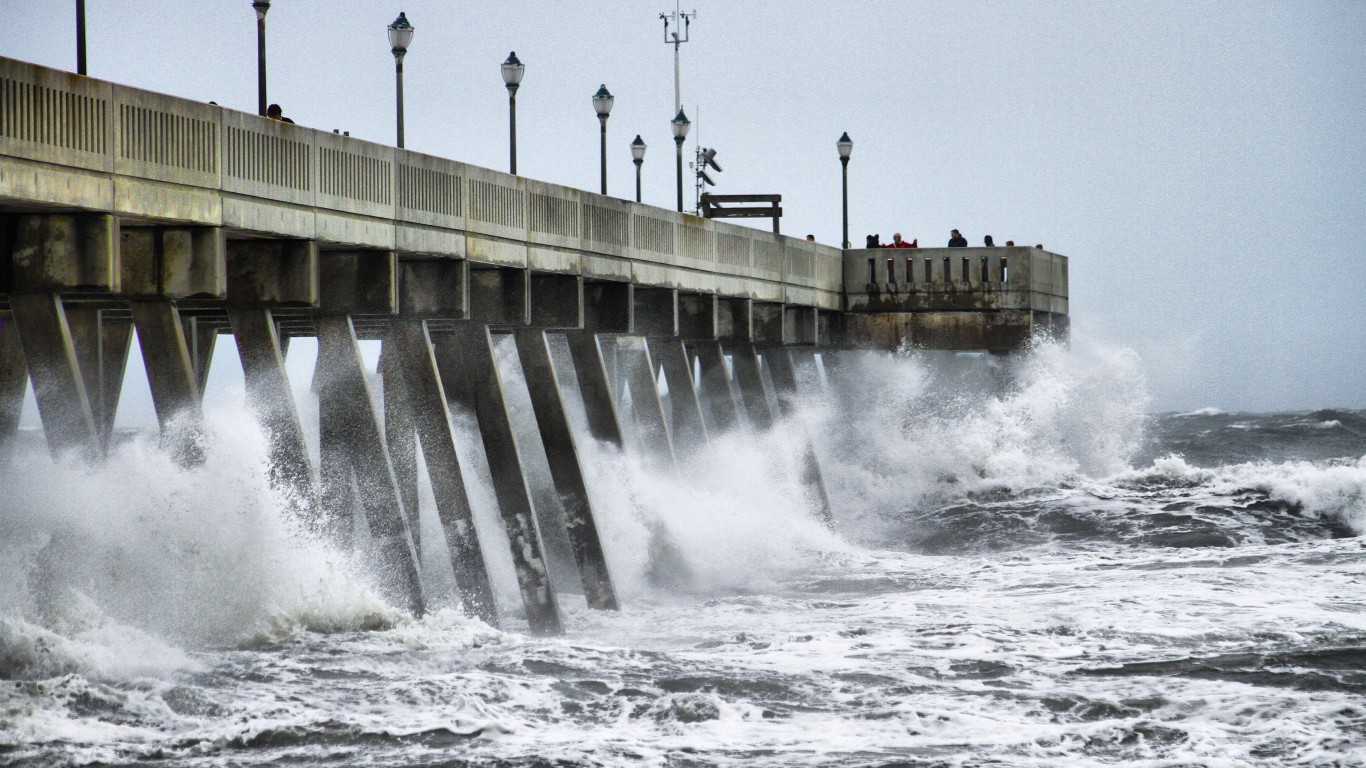 24/7 Wall St.
24/7 Wall St.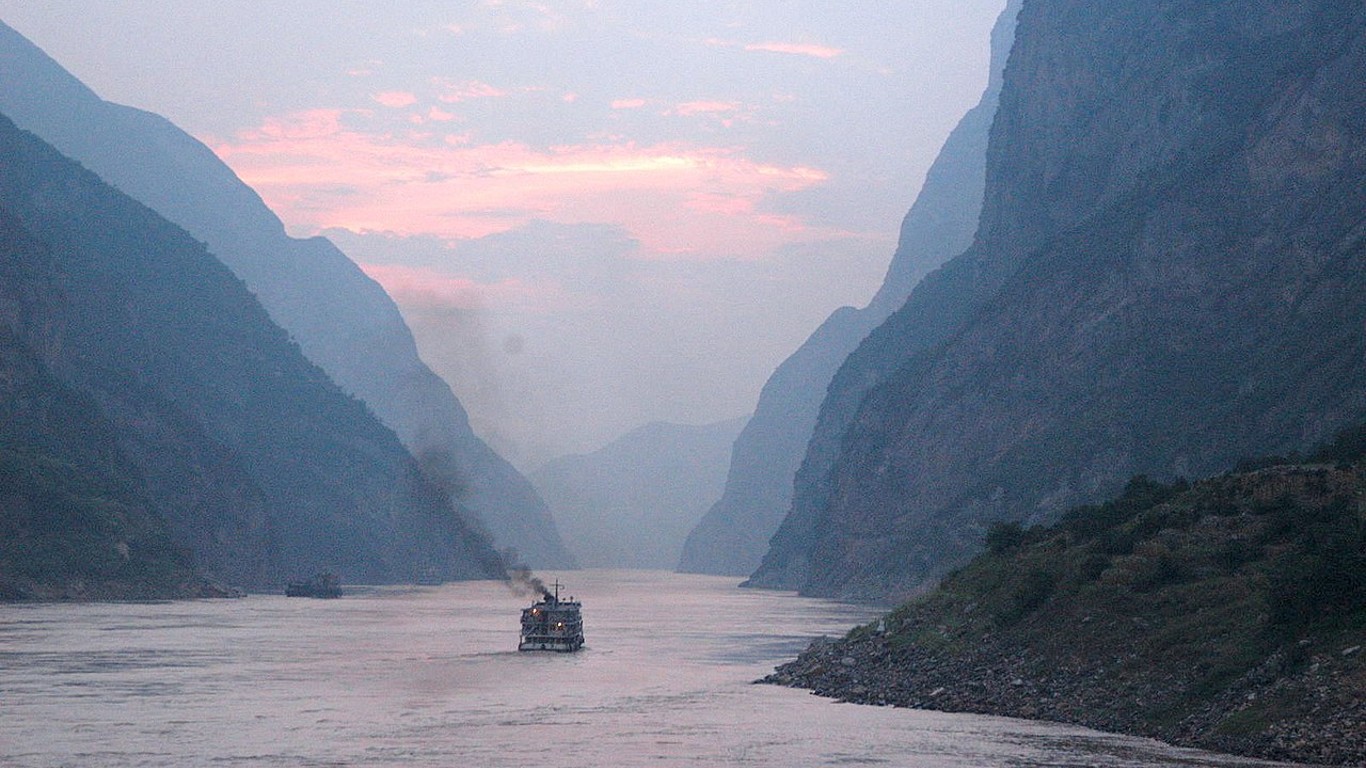
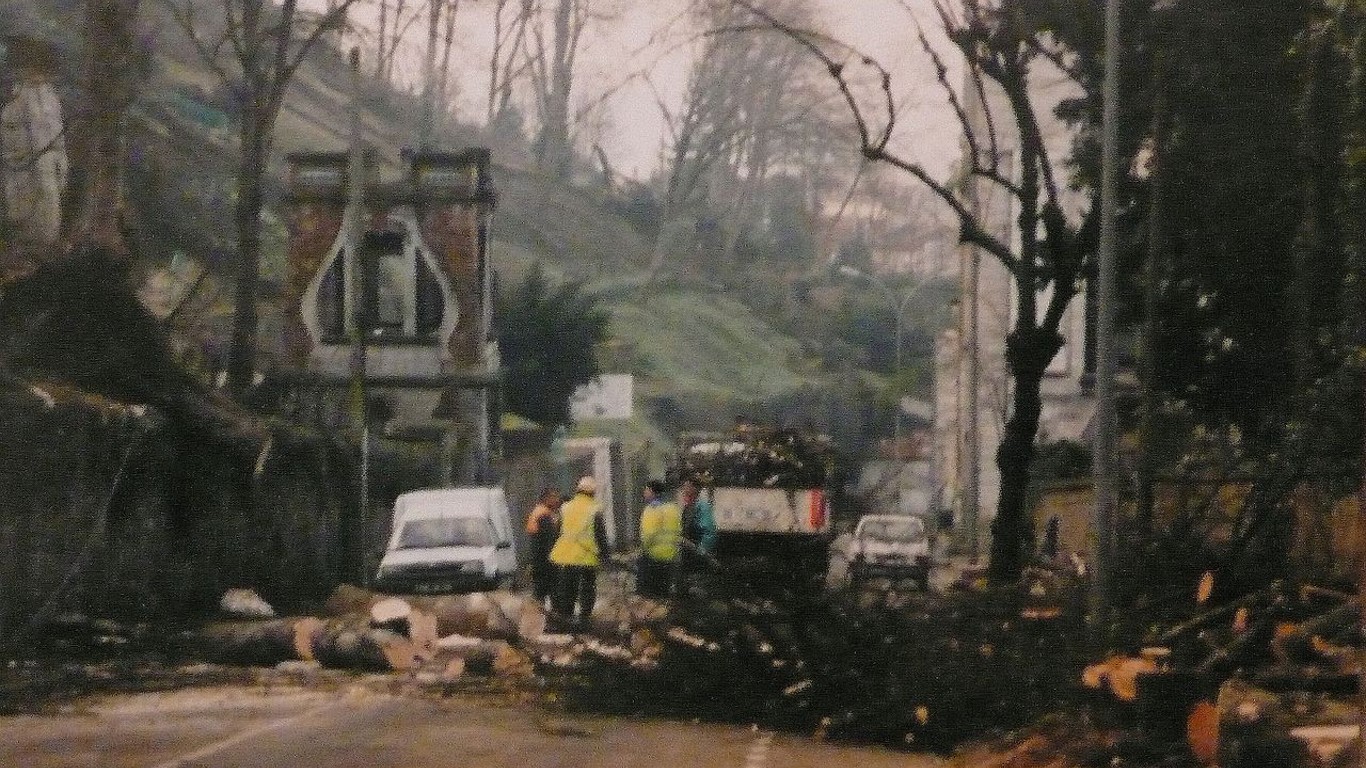
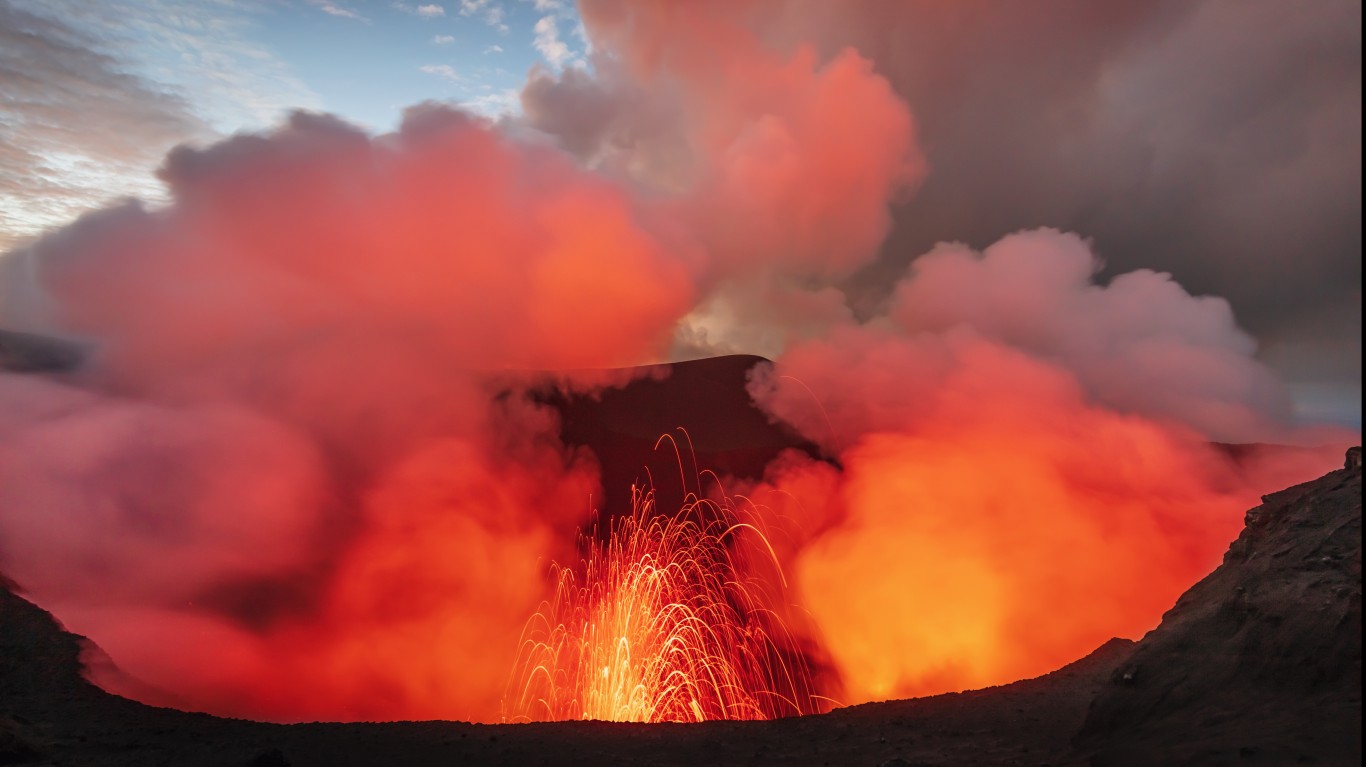 24/7 Wall St.
24/7 Wall St.